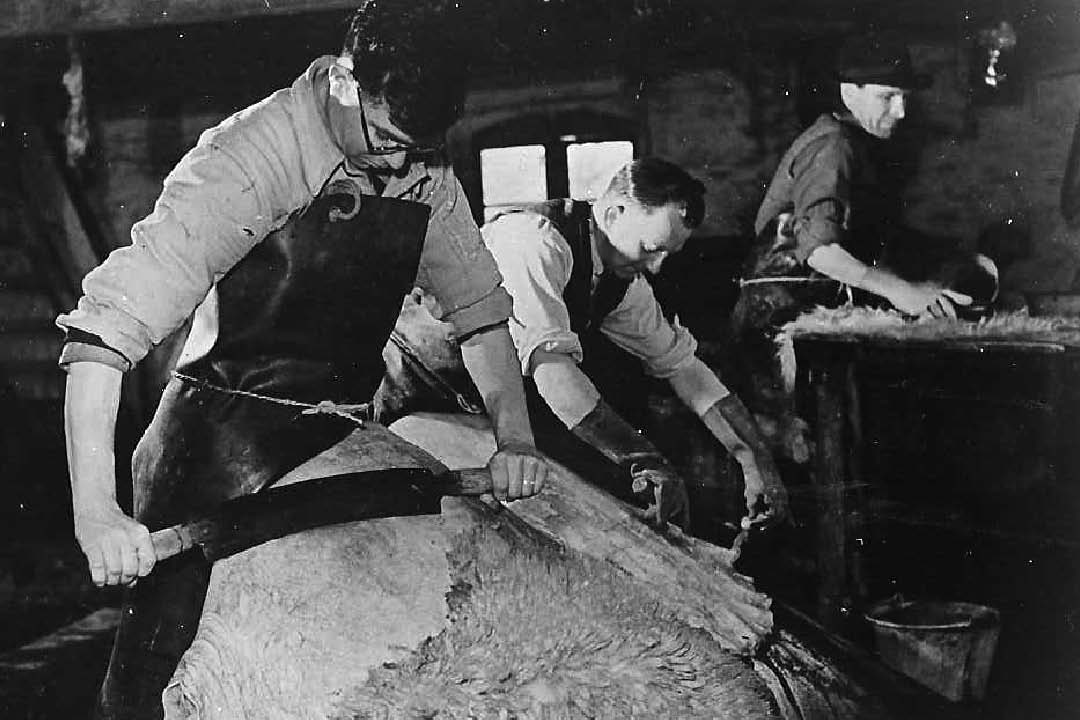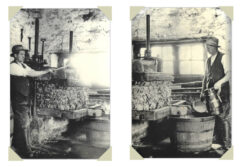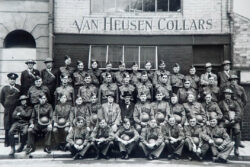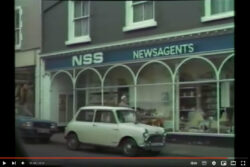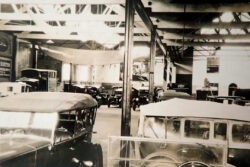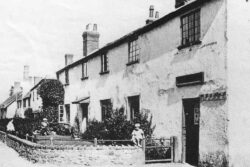Many local people still remember the Sheepskin Factory of John Wood and Sons in Old Cleeve a business that was owned by four generations of the same family. It was the Great-Grandfather of Tony Wood the last owner, who lived in Linton a centuries old farmhouse, thought to have had connections to Cleeve Abbey, who established the tannery in 1880 as a sideline to his farming activities. This was quite common in most villages when transport and communications were poor and it enabled villagers to be self-supporting.
At first the processes used at Linton were the usual ones employed in such industries but later when Tom Wood took over he began specialising in treating sheep skins. Not only did he supply wool for cloth mills in Wellington and elsewhere but also made white leather for hedging gloves and thongs for lacing machinery belts from horse and cow hides.
After the first world war Mr Tom Wood saw the possibility of making gloves from the beautifully prepared skins and orders quickly flowed in. Later fleecy bedroom slippers were added and snowy white rugs, sheepskin or curly according to taste proved to be popular gifts. With his son John he built up a flourishing business. The gloves and slippers provided stitching work for women at home in the villages of Old Cleeve, Washford, Watchet and Carhampton.
Mr Wood cut out them all out himself using patterns he had cut out in plywood. He was the consummate craftsman scorning shoddy workmanship. For example he hated sheepskin rugs that were backed with material to hide joints that showed they had been made up of odd pieces. Each of his rugs came from a single sheepskin.
Certain breeds of sheep were favoured by Mr Wood such as the Dorset Closewool which produces a skin with a fine ,straight , pure white wool. Whereas the Devon Loghorn has thick, luxuriant, curly wool. Yet another ‘Jacob’ type sheep of Spanish origin produced a white sheepskin dappled with black. This together with the difference in feed meant that not all the rugs looked alike.
There were upwards of a dozen processes to get the rug to a finished product. In sheds hidden away in the orchards at Lindon the skins were washed in pits hollowed out in the stone floors, the water being supplied by a running stream. The washing was done by revolving paddles. This was followed by washing in detergents. After fleshing the sheepskins were soaked in pits and baths containing acid dressings of various concentrations. These dressings became progressively stronger after which the skins were dried in a breezy barn.
Next they staked or stretched once done on an apparatus called a ‘crutch-stake’. The skin was hung over a perch (a rope on an iron bar) but later stretching was performed by machine. De-greasing or the abstraction of oil was another process after which the skins had to be cleaned and again staked.
Finally, the backs were suede finished using a ‘fluffing wheel’ which removed all rough pieces off the leather side. Originally this was done using a ‘moon-knife’ an interesting implement with a circular blade. The wool was clipped then energetically combed with a strong iron comb. A smith in Washford made the combs.
Mr Wood cut his rugs, using a clicking knife, into rectangular, oval, or half moon shapes or which ever the customer choose but he himself preferred the natural shape of the sheepskin to be retained.
He had a huge basket for carrying the dressed skins which was made by a blind basketmaker who lived in Stogumber. During the war a number of RAF pilots asked for Wood’s sheepskin gloves.
It is said that a bomber pilot who lived near Old Cleeve returned from a bombing raid over the Ruhr with all the glass in his windscreen shattered and managed to avoid the frost bite that the rest of his crew suffered because he was wearing a pair of Wood’s sheepskin gloves.
Right up until 1954 there was only one process carried out by machine thereafter the craft became one performed by machines and skilled craftsmen rather than one person working from the raw material to the finished article. Despite mechanisation some processes were still done by hand.
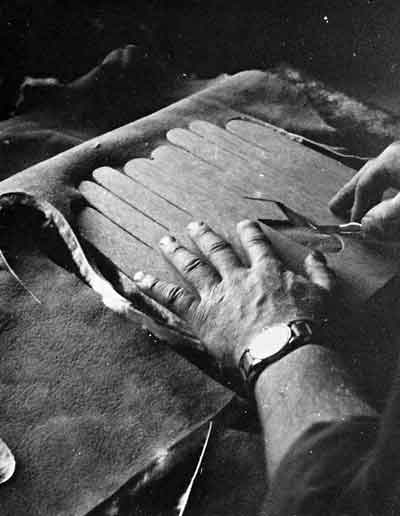
John Wood used to go to skin markets in the South West and handpick each skin – some 25,000 a year and the skins were scoured, flushed and pickled before being sent to the factory.
The type of skins chosen depended on the time of year.In April and May he acquired the beautifully soft,white skins of the unshorn lambs.
Twelve men and two women were by then employed in the numerous processes in the factory compared to four men in 1951. The production of skins having increased from 2,500 to 25,000.
John Wood, who was also a taxidermist, was joined in the firm by his two sons Roger and Anthony (Tony) and a trio of craftsmen which included William Copp of Carhampton who was with the firm for nearly four decades. They exported goods to Denmark, Canada, USA and Germany and had a sheepskin shop in Dunster.
Tony Wood retired and the company ceased to trade but people still remember it and some still have rugs, gloves and slippers made there! Times gone by but it certainly put Old Cleeve on the map.
Compiled by Sally Bainbridge on behalf of Minehead Conservation Society.
Buy the book! Minehead & Beyond
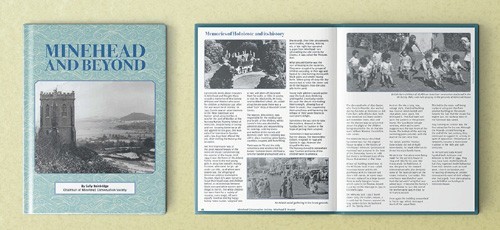
This book is a compilation of articles written for this magazine by Sally Bainbridge on behalf of Minehead Conservation Society. It contains information about the richness of West Somerset’s history; culture; people; heritage; traditions and beautiful and varied landscape. The book costs just Es and all profits go to Minehead Conservation Society.
Available to buy from AR Computing, Park Lane Home Furnishing (in their Park Lane shop), Minehead Tourist Information Centre and Townsend House (Monday am).
Office: Townsend House, Townsend Road, Minehead TA24 5RG (01643 706258) E-mail: [email protected]
